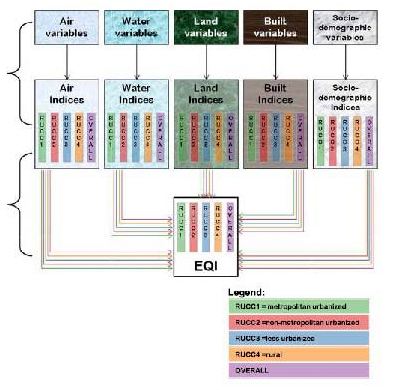The proposed Environmental Quality Index (or EQI) uses 22 performance indicators to estimate environmental sustainability for all the counties in the USA. The resulting indices were weighted so that there were an equal number of regions at the low end as well as at the high end of the index scale. As the authors note, the EQI represents only the outdoor environment and indoor conditions may, on occasion, be more important from a health point of view or need to estimated from a different set of variables.

Key Quotes:
“The empirical characterization of environmental conditions, however, is challenging because the non-residential ambient environment comprises an almost uncountable array of complex mixtures, which are difficult to quantify simultaneously… rarely, if ever, are multiple environmental domains combined, even though we know humans are exposed to these multiple environmental domains simultaneously”
“Here we describe a method of constructing an environmental quality index (EQI) representing multiple domains of the non-residential ambient environment, including the air, water, land, built and sociodemographic domains.”
“We developed an Environmental Quality Index for all counties in the United States incorporating data for five environmental domains: air, water, land, built, and sociodemographic. For each environmental domain, variables were constructed to represent exposures within that domain; indices for each domain and for environmental quality as a whole were developed by stratifying by rural–urban continuum codes. Variable loadings varied by domain and rural–urban designation, suggesting that environmental quality is driven by different domains in rural and urban areas.”
“The EQI is focused mostly on the outside environment, which may not be the most relevant exposure in relation to human health and disease.”




No comments:
Post a Comment